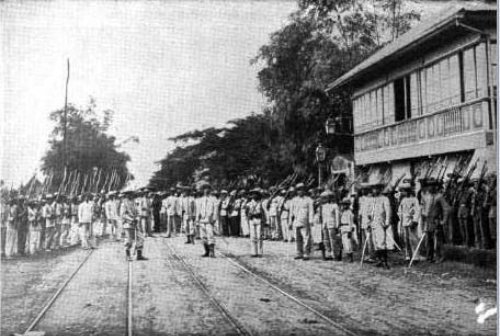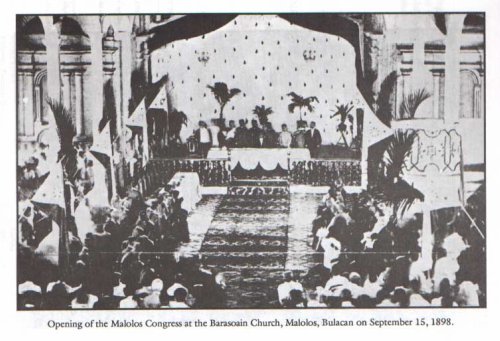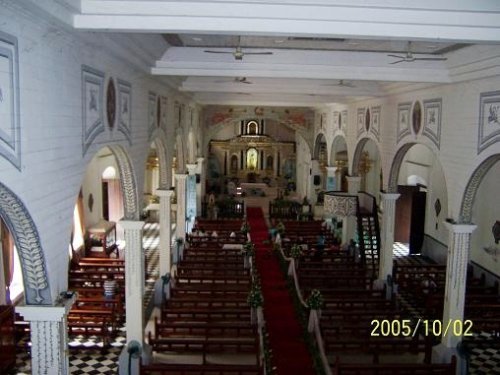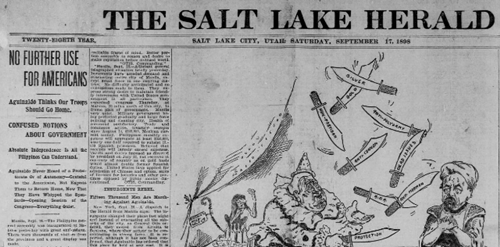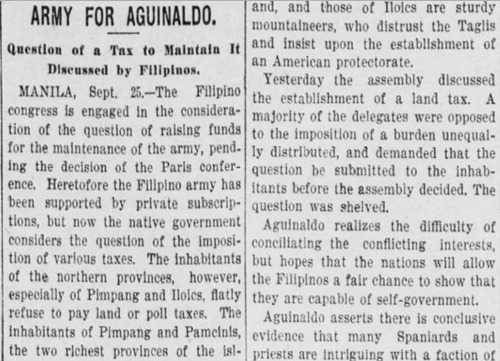Sept. 15, 1898: The Malolos Congress
Following the declaration of independence from Spain on June 12, 1898 by the Revolutionary Government, a congress was opened in Malolos, Bulacan Province on Sept. 15, 1898 to draw up a constitution for the First Philippine Republic.
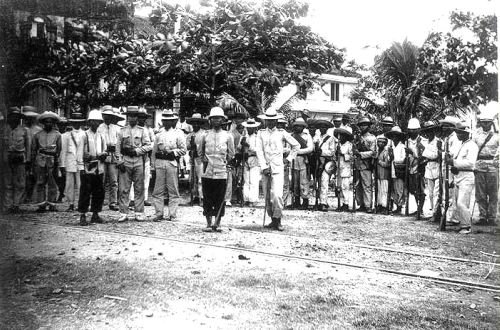
![Filipino soldiers at Malolos, tinted, 1898_opt[1]](https://criticsrant.com/wp-content/uploads/2020/12/Filipino-soldiers-at-Malolos-tinted-1898_opt1.jpg)
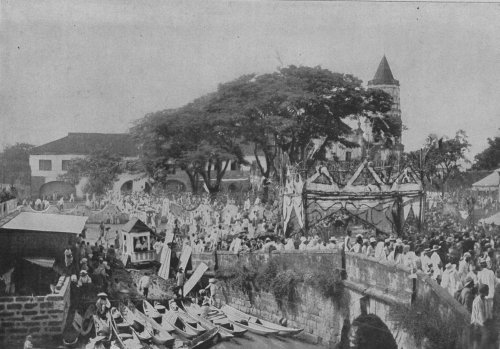

The basilica at Barasoain was filled with delegates and spectators. Outside, the Banda Pasig played the National Anthem. When Aguinaldo and his officers arrived, the delegates, the cream of the Filipino intelligentsia, spread out to give way to the President. Cries of “Viva!” reverberated.
President Aguinaldo formally declared the victorious conclusion of the war of liberation against Spain.
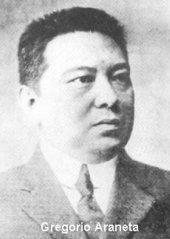
On September 29 the Congress ratified the independence proclaimed at Kawit on June 12, 1898. Aguinaldo partly said in Tagalog:
� now we witness the truth of what the famous President Monroe said to the effect that the United States was for the Americans; now I say that the Philippines is for the Filipinos.�

A few other amendments were inserted in the draft constitution before it was sent to Aguinaldo for approval.
It was the first republican constitution in Asia. The document stated that the people had exclusive sovereignty. It stated basic civil rights, separated the church from the state, and called for the creation of an Assembly of Representatives which would act as the legislative body. It also called for a Presidential form of government with the president elected for a term of four years by a majority of the Assembly.

Aguinaldo declared that this constitution was �the first crystallization of democracy� in Asia. He sent ambassadors to the United States, Japan, England, France, and Australia to seek recognition for his government.
After promulgating the Malolos Constitution, the Filipino leaders made preparations to inaugurate the first Philippine Republic.
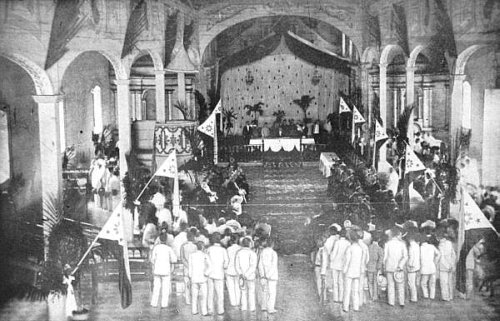

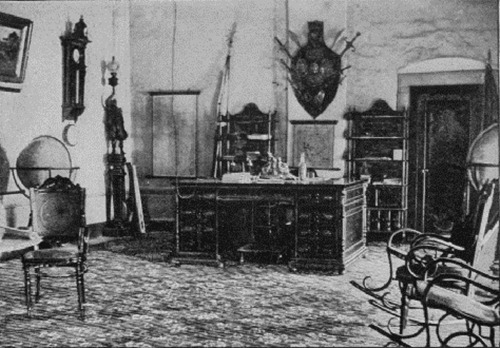
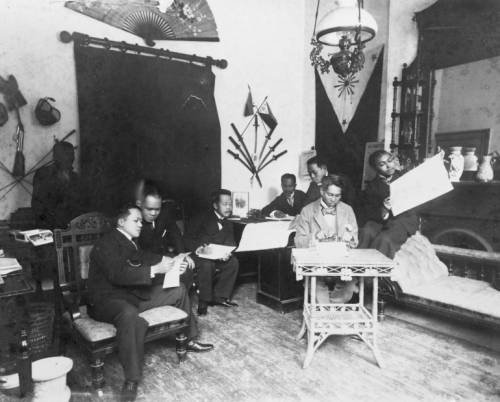

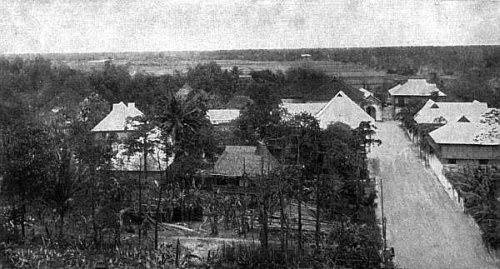

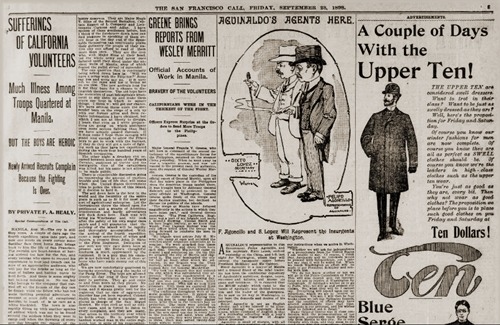
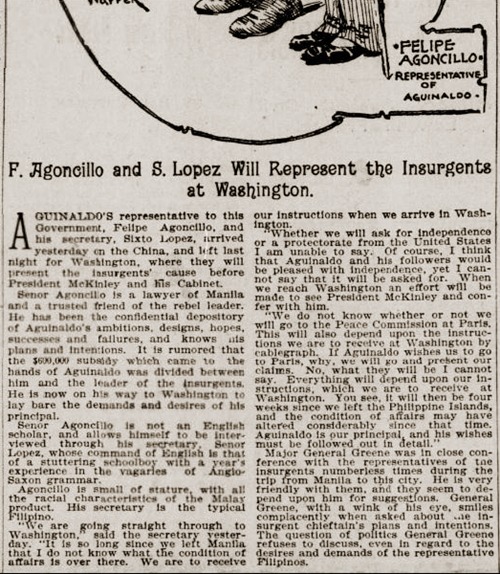
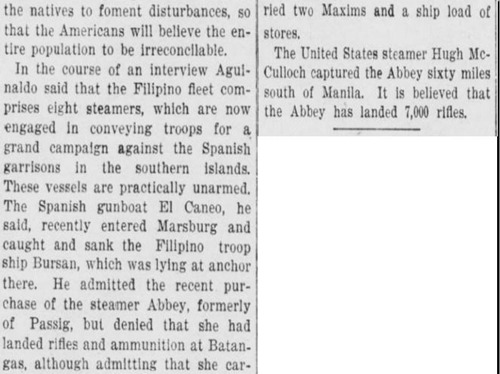
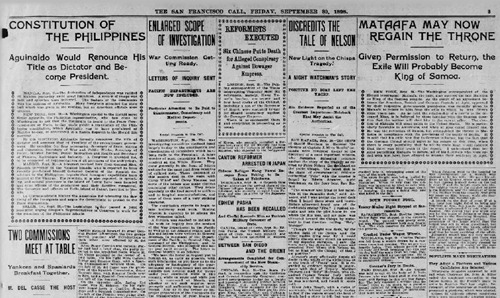

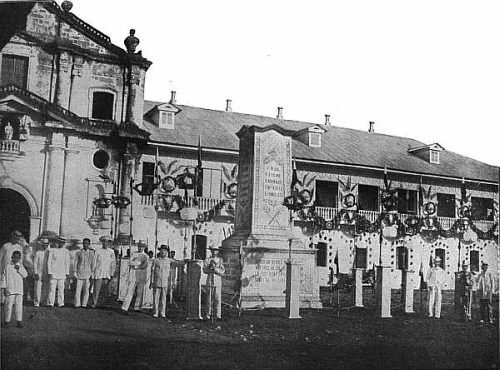

On Oct. 14, 1898, Admiral George Dewey cabled Washington: “It is important that the disposition of the Philippine Islands should be decided as soon as possible. . . . General anarchy prevails without the limits of the city and bay of Manila. Natives appear unable to govern.”
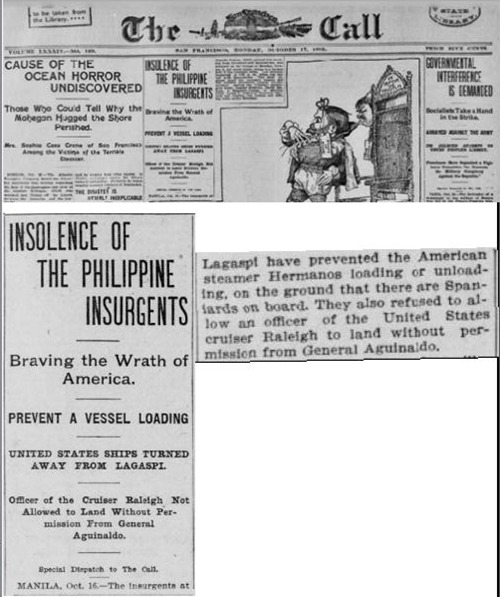


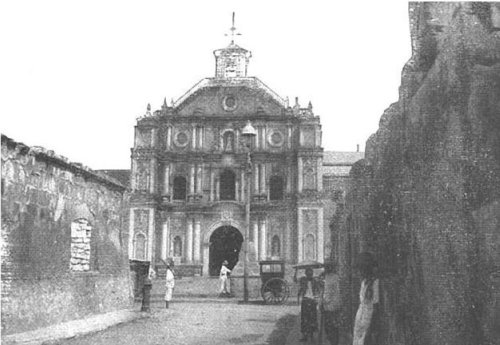


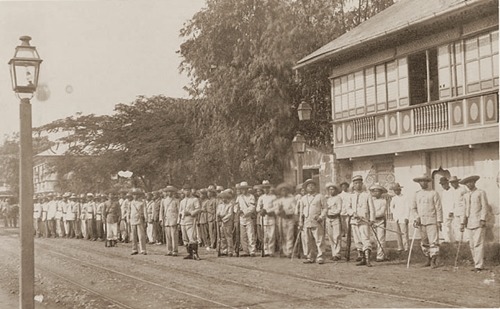

Published in Manila on Nov. 1, 1898 by J.D. Mitchell. He wrote on the preface: “For the benefit of our readers we give here an explanation of the significance of the emblems on the Filipino flag and coat-of-arms which are on the cover. The red, white, and blue of the flag are respectively emblematic of the blood spilt in the cause of Liberty, the purity of Liberty, and the blue sky which covers all Liberty. The three stars represent the three rebellious islands of Luzon, Viscayas [sic] and Mindanao. The eight rays of the central emblem represent the eight provinces of these islands. Finally, the mountain on the coat-of-arms represents Biac-na-ba-to [sic], or ‘Stone-cut-in-two,’ the place where the afterwards violated treaty was signed between the Spaniards and the Filipinos.”
Nov. 24, 1898: First Thanksgiving Dinner in the Philippines
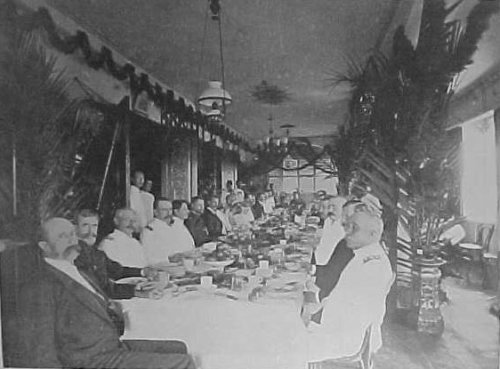
On Nov. 26, 1898, the New York Times reported the first observance of Thanksgiving Day in the Philippines by the Americans:

